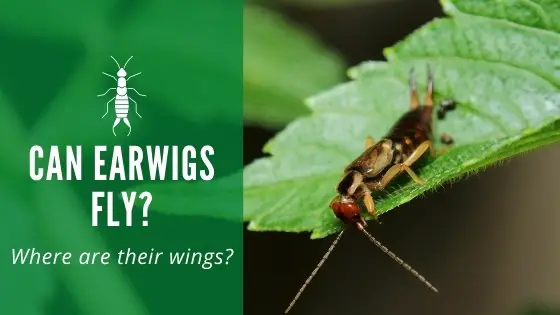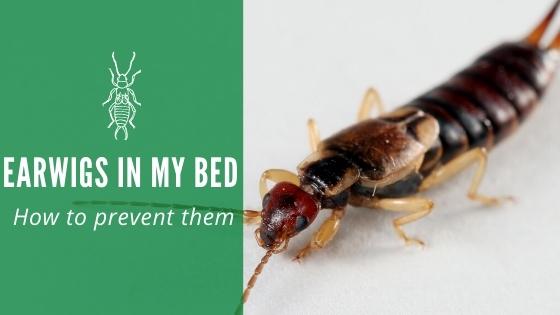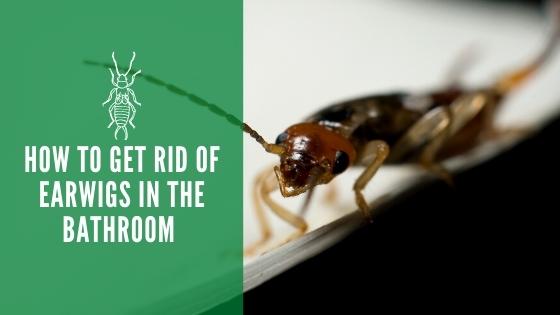What Are Earwigs?
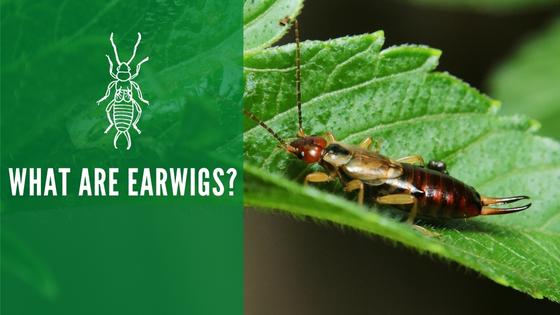
If you’ve ever noticed a brown, slender-like insect inside your home, chances are you’ve encountered an earwig. While these insects seem a bit intimidating, thanks to the pronounced pincers on the back of their abdomen, they are mostly harmless.
An earwig is a type of insect that belongs to the family Dermaptera. It originally got its name because people used to believe this insect crawled into people’s ears and ate their brain matter. Fortunately, this is not the case, as earwigs prefer to munch on vegetation rather than humans.
What Does an Earwig Look Like?
Earwigs are smaller insects that are only around 5/8 of an inch long. Their most distinguishing feature is the pincers extending from the back of their legs. Fortunately, earwigs don’t actively seek out humans to pinch them but might do so if picked up and improperly handled.
Earwigs also have distinct bands on their thorax and abdomen, a darker brown color. Their heads are usually darker brown or reddish, while their legs are light brown or yellow. A large pair of antennas protrude from their head as well.
They have wings extending from the top of their abdomen but rarely fly. In instances they do fly, it is only in short bursts.
Where Did Earwigs Come From?
You might be surprised to know there are only around ten earwig species native to the United States, and these types of native earwigs are harmless and even helpful.
On the contrary, the earwig you will likely encounter as a pest is the European Earwig. The European Earwig was introduced to the United States sometime around the 1900s.
Earwigs are now commonly found around the United States and located everywhere in the world except for the continent of Antarctica.
What Do Earwigs Eat?
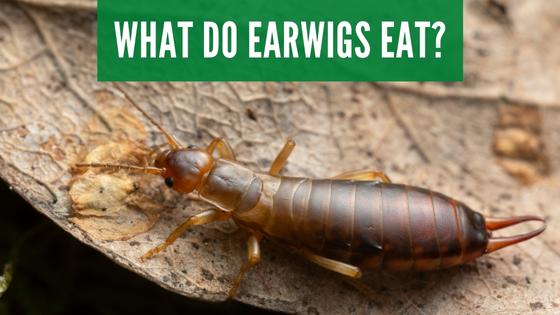
Earwigs have a diet that consists of mostly:
- Vegetables
- Flowers
- Ornament plants
- Decaying vegetation
- Other insects such as Aphids
Curious about insects that eat earwigs? Check out this article.
Earwig lifecycle
One of the things that make earwigs so unique is their caring mothers! When an earwig lays between 20 to 50 eggs, she is very protective of them and will go as far as eating off any mold that might grow on top of her eggs.
Earwigs will usually lay eggs sometime in the fall or winter. Their insect eggs are found under the soil, under leaves, and in areas protected from the elements. They might also be found within a home in crevices.
Earwigs have three life cycles, including:
- Eggs: They are white and tan and circular, and earwigs will hatch from these eggs in around seven days.
- Nymph: Nymphs are smaller hatchlings, and they will return to their nest once they have hatched. They spend around 40 to 60 days as a hatchling. During this stage, you might notice an earwig looks smaller and still molting.
- Adults: After the earwig has been molted, they will then be considered full-grown adults who can hunt and fend for themselves.
What Attracts Earwigs To Your House?
If you find earwigs living in your home, it usually isn’t because they are attracted to a particular smell or food. Below are some common reasons why you might see earwigs in your home.
Shelter From Elements
Most earwigs will only seek out shelter in your home due to a lack of shelter outdoors. Although they usually live outdoors under mulch, sticks, rocks, and vegetation, they might accidentally enter your home through crevices and cracks, such as in your basement.
Lights
Earwigs are also known to be attracted to lights. Because of this, you might see them invading your patio at night. You might also find them grouped under certain lights in your home, such as front porch lights.
Transportation
Earwigs are hitchhikers, and the most common way they are transported is through other objects like logs, laundry baskets, or even planter beds, with earwigs lying in wait.
Moisture
Earwigs are attracted to moisture, and you might find them in areas that have lots of water in your homes, such as laundry rooms, kitchens, and bathrooms. You might also find them in damp basements.
How Can You Prevent Earwigs?
Keeping the above in mind, below are some of the best tips to prevent earwigs from invading your home and causing an infestation.
- Seal up any crevices in your home with caulk or silicone. This will prevent earwigs from entering it in the first place.
- Check items you bring into your homes, such as laundry baskets, planter beds, or other items like firewood.
- Get rid of any excess moisture through things such as increased air conditioning or installing a dehumidifier if necessary.
Why Are Earwigs a Problem?
Earwigs don’t usually bite, but they are known to emit a foul smell when you bother them. This is a defensive measure and can be difficult to deal with in large numbers. Especially if they’re in a place like your bed.
Earwigs might also harm your surrounding garden and plants and, occasionally, feed on pantry items.
Fortunately, earwigs aren’t venomous. They are more of a nuisance for homeowners. However, because they do have the potential to bite humans if bothered, it’s best to get rid of them as soon as possible.

